Blue Birds in Florida: A Guide to Their Beauty and Habitats
Florida is renowned for its incredible biodiversity, thanks to its eco-friendly environment, which makes it a sanctuary for various species. Many birds migrate to Florida for better survival conditions, and locals are committed to protecting these creatures. Residents and governmental and conservation organizations provide shelters and establish care centers to aid their survival.
Among Florida’s avian treasures are the beautiful blue birds in Florida whose charming songs add a touch of magic to the skies. These birds are rare in many other parts of the world, making them precious to Florida’s wildlife.
There are 11 commonly observed types of blue birds in Florida, each with unique traits. Read on to learn more about these captivating creatures and discover the beauty they bring to Florida’s landscapes.
11 Types of Blue Birds in Florida
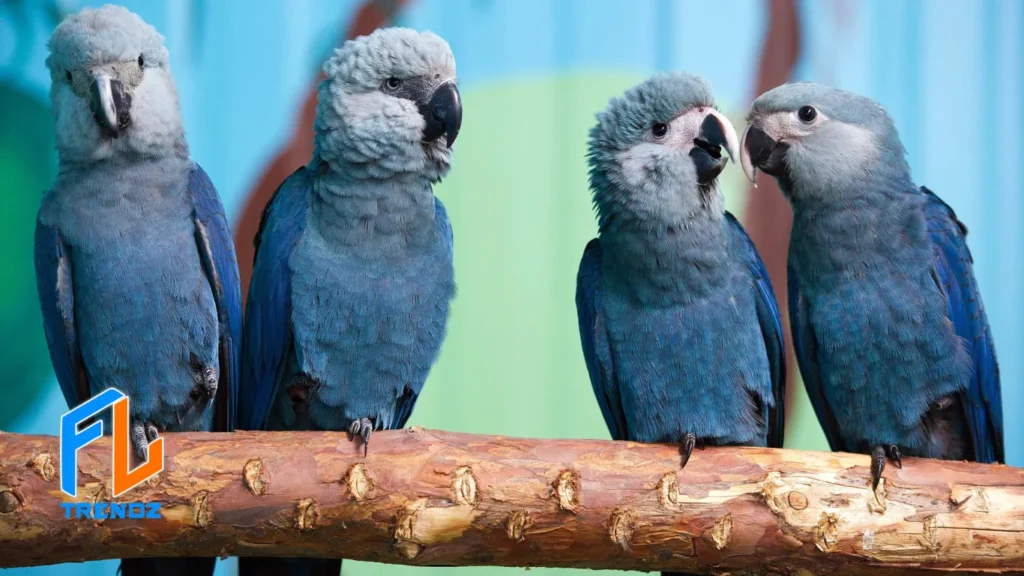
Appearance and Distinct Features
Florida’s blue birds vary widely in appearance, with different species showcasing a range of colors, sizes, and habitat preferences.
As you marvel at the serene habitats of blue birds, it’s worth noting that many Floridians rely on natural spaces for mental well-being, especially during times of hardship. For those needing support, here’s how to apply for unemployment in Florida.
Below is an overview of some notable species, including their typical size, weight, habitat, egg-laying habits, and lifespan.
| Species | Size (cm) | Weight (kg) | Habitat | Eggs Laid | Lifespan (years) |
| Eastern Bluebird | 16-19 | 0.028-0.039 | Open woods | 3-5 | 2-4 |
| Cerulean Warbler | 11-12 | 0.008-0.011 | Forests, swamps | 3-4 | 2-3 |
| Blue-gray Gnatcatcher | 11-12 | 0.006-0.008 | Woodlands, scrub | 2-4 | 2-3 |
| Indigo Bunting | 12-14 | 0.017-0.023 | Open fields, woods | 3-4 | 2-3 |
| Blue Grosbeak | 16-19 | 0.028-0.039 | Open woods, fields | 4-5 | 2-3 |
| Little Blue Penguin | 30-33 | 0.59-0.77 | Coastal waters | 1-2 | 6-10 |
| Blue and Yellow Macaw | 89-94 | 0.63-0.81 | Mangrove forests | 2-4 | 50-60 |
| Mountain Bluebird | 16-19 | 0.028-0.039 | Open woods, fields | 3-5 | 2-4 |
| Azure-winged Magpie | 46-48 | 0.077-0.11 | Woodland scrub | 2-4 | 5-7 |
| Blue-throated Macaw | 89-94 | 0.063-0.81 | Mangrove forests | 2-4 | 50-60 |
| Great Blue Turaco | 71-76 | 0.27-0.4 | Woodland scrub | 2-4 | 10-15 |
| Blue-bellied Roller | 30-33 | 0.057-0.077 | Woodlands, scrub | 2-4 | 5-7 |
| Purple Winged Roller | 30-33 | 0.057-0.077 | Woodlands | 2-4 | 5-7 |
While observing the stunning blue birds of Florida, it’s essential to understand the laws that protect not only wildlife but also the people. One such crucial regulation concerns the age of consent in Florida.
Following are the types of blue birds in Florida.
Eastern Blue Bird
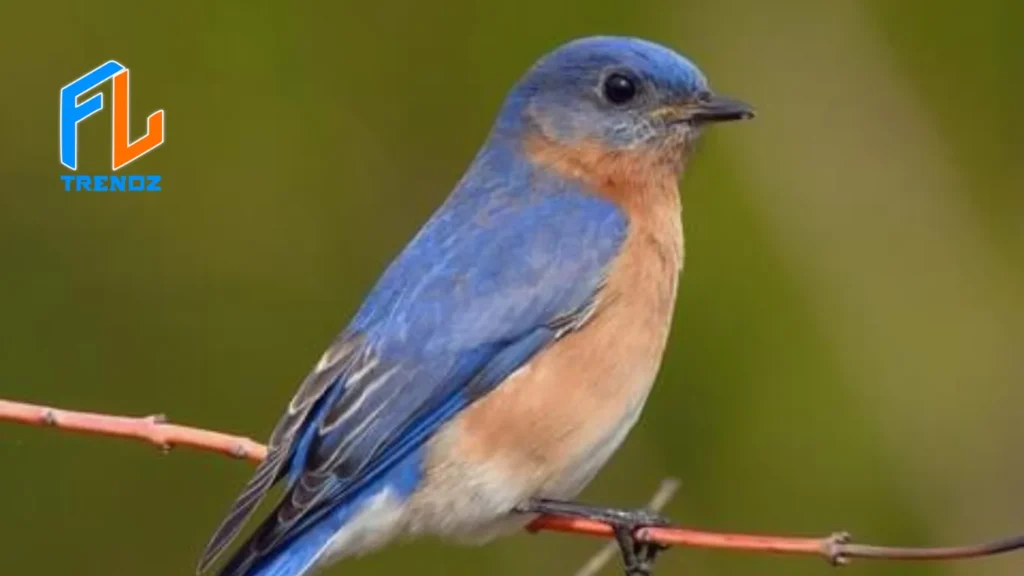
The Eastern Bluebird (Sialia sialis) is one of the most frequently seen blue birds in Central Florida and blue birds in South Florida. They are a familiar sight in open fields and wooded areas year-round.
The eastern bluebird, renowned for its vibrant blue and orange plumage, is a favorite among Florida birdwatchers. These birds are often found in woodlands, where their melodious songs echo through the trees.
Residing year-round in Florida, eastern bluebirds favor open areas with scattered trees, such as farmlands and grassy fields. Small, alert, and strikingly beautiful, they have bright blue feathers above, a white belly, and a soft rust-colored chest.
Their diet is diverse, including beetles, crickets, caterpillars, grasshoppers, spiders, and various berries. Perching on low branches, they intently observe their surroundings before fluttering gracefully to the ground to forage for food.
The blue bird habitats of Florida can be dramatically affected during certain times of the year. Understanding when hurricane season in Florida occurs is crucial for protecting these beautiful birds and their environments.
Indigo Bunting
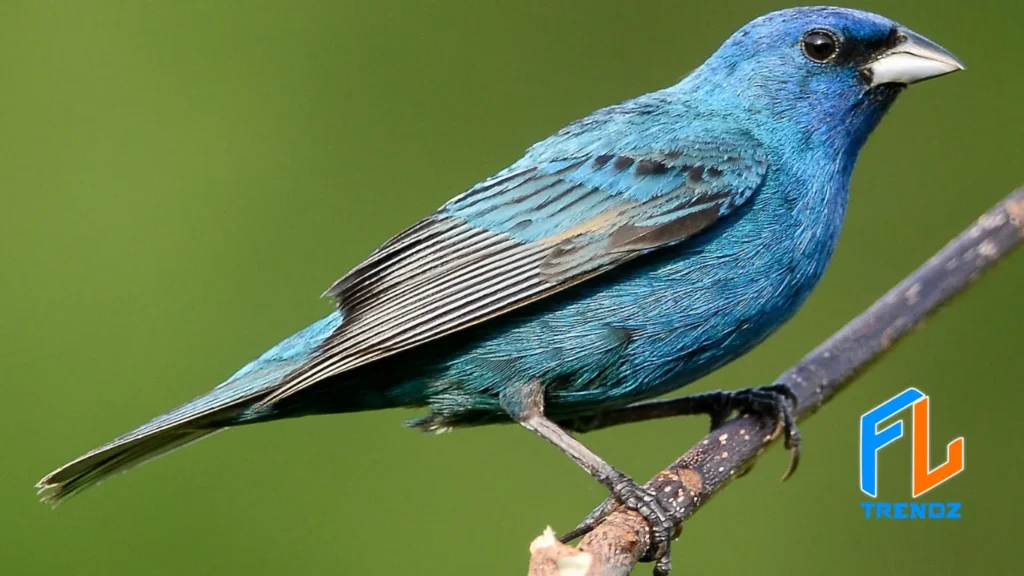
This bird adds a burst of vibrant blue to Florida’s lush landscapes, creating a stunning visual contrast. These small, lively creatures often inhabit open grassy areas, where their striking colors are hard to miss. During the breeding season, they captivate onlookers with acrobatic flight displays, showcasing impressive agility as they swoop and dive through the air.
Florida’s thriving wildlife and picturesque landscapes, like those enjoyed by blue birds, make it an appealing place to live. One factor contributing to its popularity is that Florida does not have state income tax.
Blue Jay
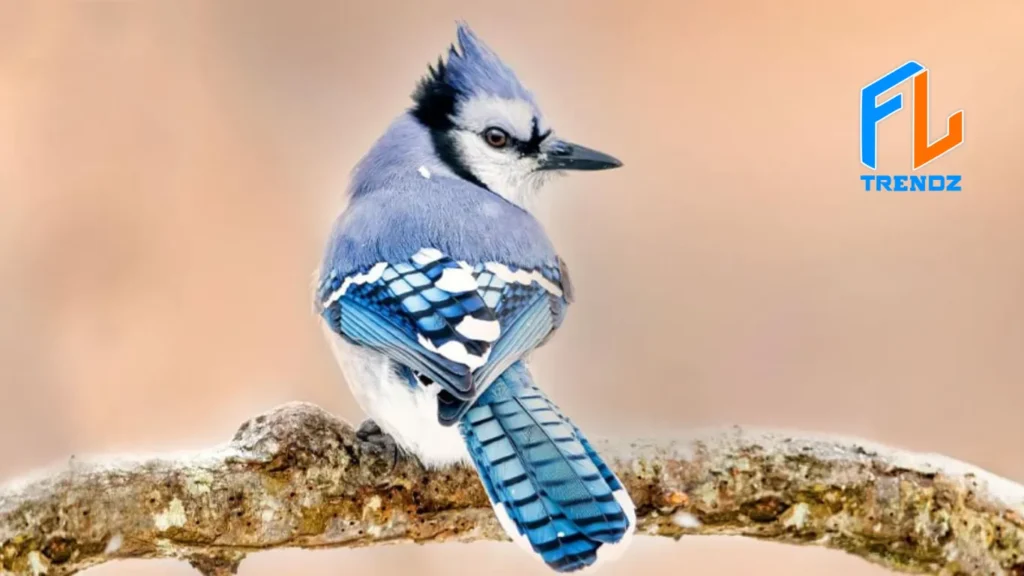
Though the Blue Jay’s plumage includes subtle shades of grey and white, its striking blue feathers make it unmistakable. These highly adaptable birds flourish in a wide range of environments, from urban towns and gardens to rural groves and wooded areas.
Blue Jays are found year-round across the Eastern United States, including Florida. These long, elegant songbirds boast a palette of vibrant blue hues accented by bold black patterns and crowned with a light blue crest.
Their diet is diverse, consisting of insects, nuts, seeds, and grains. They are often seen foraging for food on the ground, in shrubs, or high up in the trees, showcasing their resourcefulness and versatility.
Exploring Florida’s natural wonders, such as the blue bird’s favorite spots, often raises questions about state laws. If you’re curious about encounters with law enforcement, you may wonder if Florida is a stop and ID state.
Florida Scrub Jay
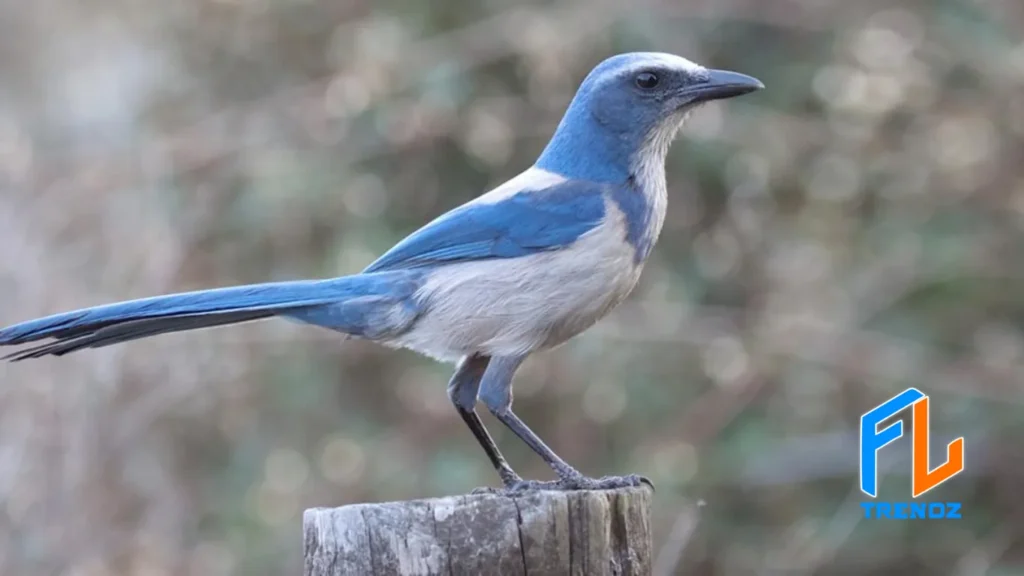
The Florida Scrub Jay is a unique species found nowhere else in the world but Central Florida. These birds are exclusively native to Florida’s scrublands, and they rarely stray far from their cherished patches of scrub habitat.
Large and slender, Florida Scrub Jays are easily recognized by their long tails and sturdy bills. Their plumage features a striking blue on the neck, wings, and tail, contrasted with greyish-white backs and soft blue bellies. Their diet includes a variety of insects, acorns, berries, and even small animals like snakes, mice, and lizards.
Foraging in flocks, they search for food both in the trees and on the ground, all while exhibiting complex social behaviors. These fascinating birds form intricate social systems, adding to their allure and ecological importance.
The beauty of Florida’s wildlife, from blue birds to woodpeckers, often inspires educational initiatives. Curious about what educators earn here? Here’s a look at how much teachers make in Florida.
Blue-Headed Vireo
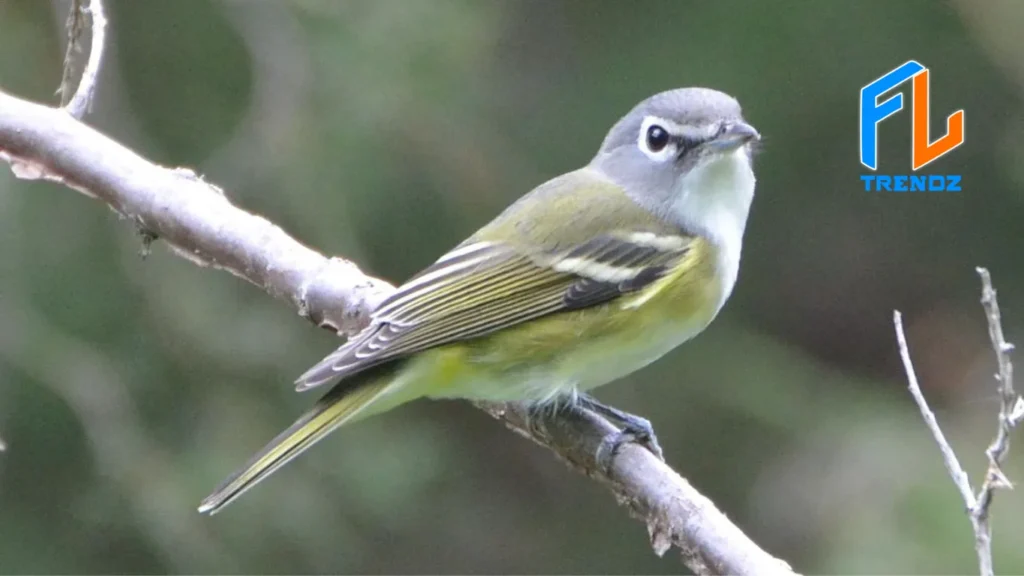
The blue-headed vireo, a bird native to the eastern United States and Canada, migrates to Florida to spend the winter months. You can spot these birds in various forested and woodland habitats, including parks and swamps.
Small yet sturdy, the blue-headed vireo is easily identified by its bluish-grey head, greenish upperparts, and bright white underparts. It has a stocky build, with a hooked bill and thick legs. The wings and tail display distinctive white and black streaks, adding to its striking appearance.
Their diet consists of insects, larvae, spiders, snails, and small fruits. With careful precision, blue-headed vireos forage high in the trees, diligently inspecting the undersides of leaves and twigs for their next meal.
While nature lovers find solace in observing blue birds, life challenges may arise that require legal guidance. If you’re going through a tough time, you might need to know how to file for divorce in Florida.
Painted Bunting
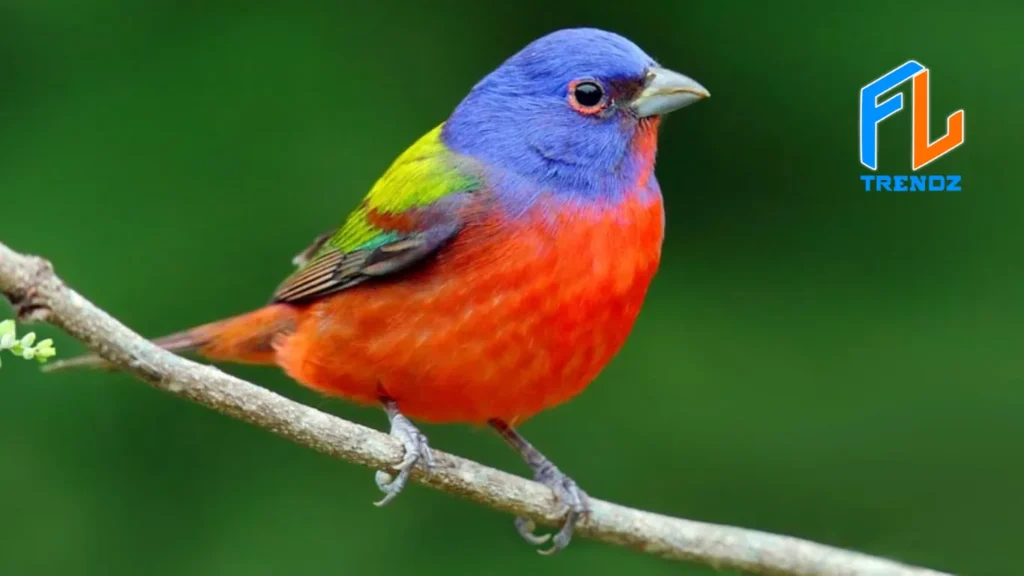
Along the northeast coast of Florida, painted buntings breed before migrating through Central Florida and spending the winter in the southern parts of the state.
These vibrantly colored, medium-sized birds are often found along woodland edges, roadsides, in towns, and in gardens. Their striking plumage features a captivating mix of green, red, and blue, making them one of the most beautiful birds in North America.
Painted buntings feed on a diet of seeds and insects. They typically stay hidden in dense cover, foraging on the ground and occasionally joining mixed flocks to search for food.
Florida’s abundant wildlife, including its blue birds, attracts many nature enthusiasts and workers. Understanding what the minimum wage in Florida is can be helpful if you’re considering a move to the Sunshine State.
Common Gallinule
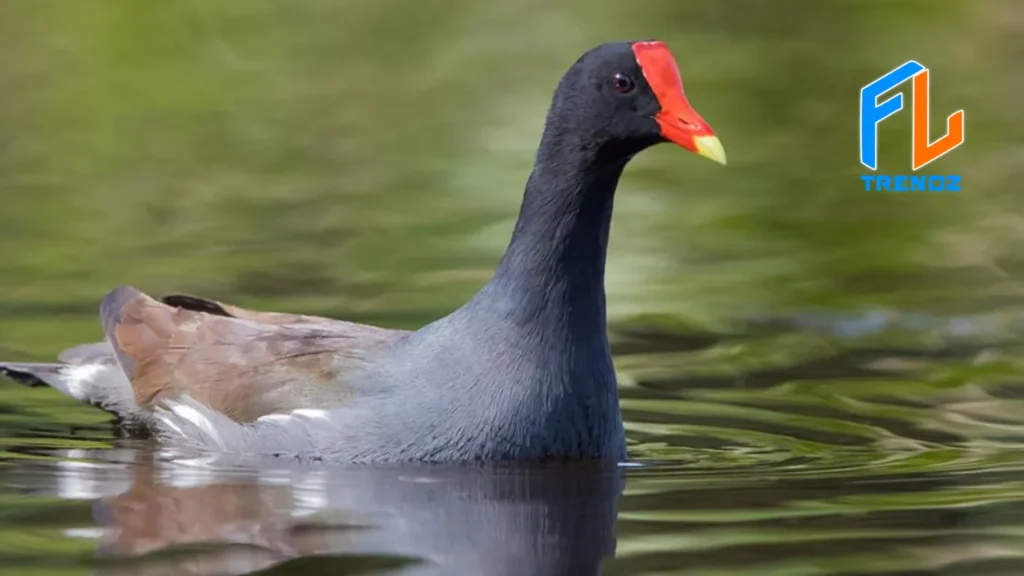
The Common Gallinule is widely found across the United States and lives year-round in Florida. These birds thrive in freshwater marshes and reedy ponds, where their striking appearance and behaviors are often admired.
Medium-sized with thick necks and long legs with sprawling toes, Common Gallinules are easily recognized by their attractive bluish-grey to charcoal-grey plumage. They also feature a distinctive bright red forehead shield and vivid green legs, adding a splash of color to their marshy habitats.
Their diet consists of plant matter, snails, insects, and seeds, making them versatile foragers. Highly adaptable, Common Gallinules are a familiar sight in the wetlands of the southeastern United States, effortlessly navigating the dense vegetation of the marshes.
As you immerse yourself in Florida’s natural beauty, you may wonder about laws related to lifestyle choices. For example, is marijuana legal in Florida? It’s important to know what’s allowed while exploring.
Great-Blue Heron
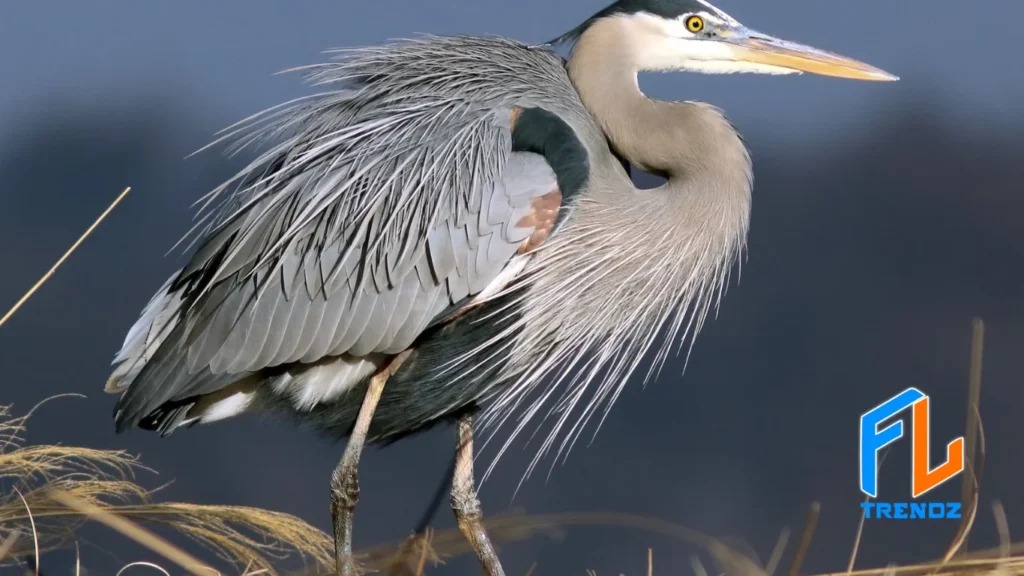
The Great Blue Heron is a majestic aquatic bird commonly found year-round across much of the United States, including Florida. It inhabits a variety of wetland environments, such as marshes, swamps, coastal bays, shores, and tidal flats.
These impressive birds are known for their long legs, elongated necks, and thick, pointed bills. Their bluish-grey plumage is complemented by a striking black stripe that extends across their eyes, adding to their elegant appearance.
Great Blue Herons have a varied diet, feeding on fish, amphibians, reptiles, small mammals, birds, and insects. They are masterful hunters, often standing motionless in shallow water, patiently waiting for prey to come within reach before swiftly striking with their dagger-like bills.
Blue birds aren’t the only feathered residents of Florida. The state is also home to several species of woodpeckers, adding to the richness of its avian community.
Tree Swallow
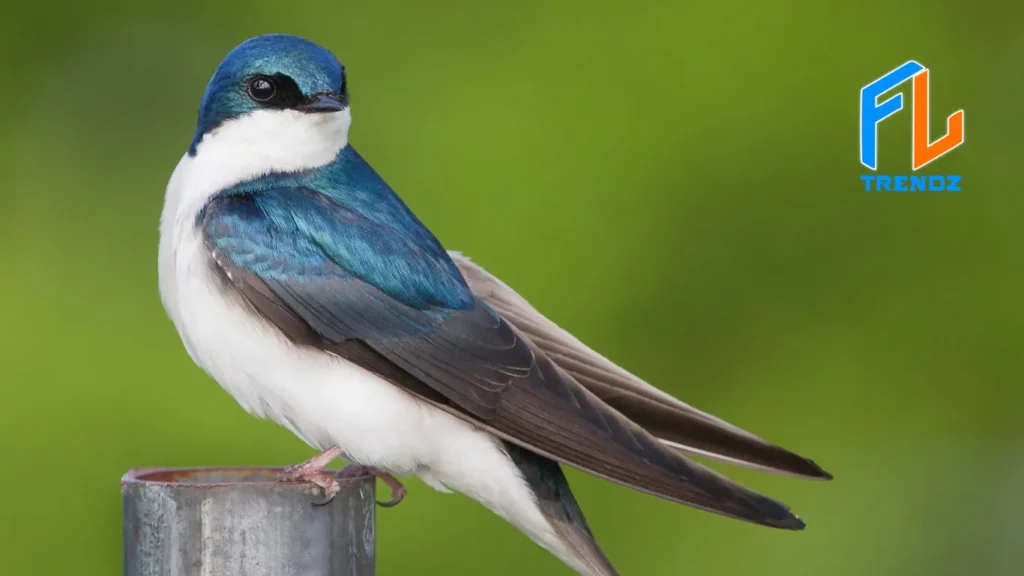
Tree swallows are abundant across North America and are commonly seen in Florida during the winter months. These agile birds favor open areas near water, such as meadows, lakes, and marshes.
Small and streamlined, tree swallows are easily recognized by their glossy bluish-green plumage above, bright white underparts, and dark brown wings and tails. Their striking appearance and swift flight make them a delight to watch.
Tree swallows primarily feed on insects and berries. They are expert aerial hunters, often flying low over water and fields to snatch prey from the surface in mid-air with incredible precision.
Blue birds often frequent coastal habitats, and if you’re exploring birdwatching along the Gulf Coast, you’ll find that the Florida Panhandle beaches provide stunning views and vibrant ecosystems.
Little Blue Heron
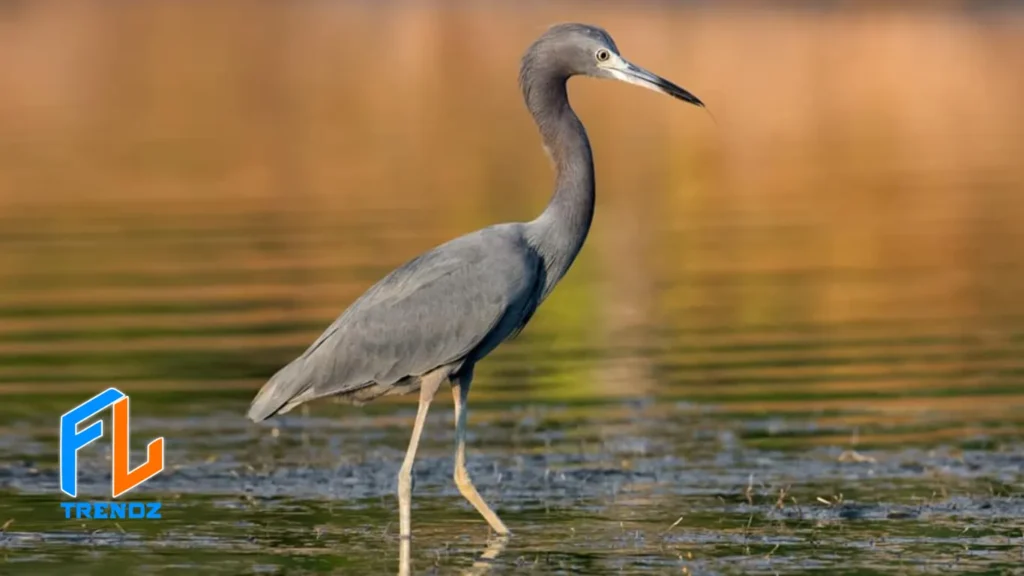
The little blue heron resides in the southern United States and is a year-round inhabitant of Florida. It is most commonly found in freshwater habitats such as marshes, rice fields, swamps, and ponds.
These birds bear a resemblance to snowy egrets, with their long legs and slender necks. Adult little blue herons are characterized by their striking maroon heads and dark bluish-grey bodies, making them a beautiful sight in their natural environments.
Their diet consists of fish, crustaceans, frogs, lizards, snakes, and turtles. Methodical foragers, little blue herons can often be seen wading slowly through shallow waters, patiently waiting for the perfect moment to catch passing prey.
Purple Martin
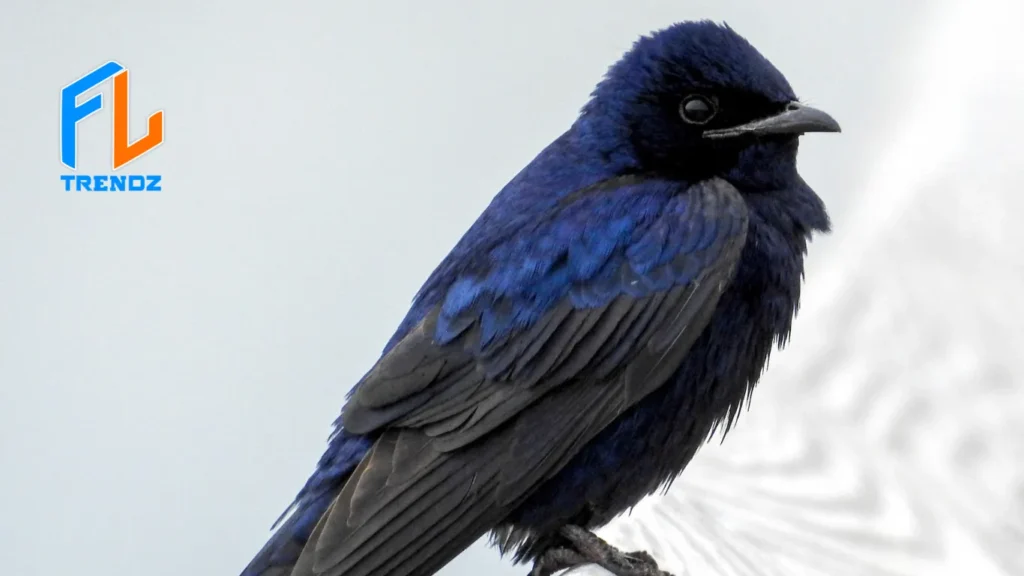
The purple martin breeds widely across the Eastern United States and is a familiar sight throughout Florida. These birds are commonly found in areas like farms, towns, woodland edges, and even lowland deserts.
Purple martins are the largest swallows in North America, easily recognized by their broad chests, long, pointed wings, and forked tails. Males are particularly striking, with their glossy, dark bluish-purple feathers contrasting against brownish-black wings and tails.
Their diet includes flies, dragonflies, beetles, crickets, grasshoppers, and butterflies. Renowned for their graceful flight, purple martins expertly forage by flying low and catching prey mid-air with remarkable agility.
The Smallest and Largest Blue Birds in Florida
Smallest
The Cerulean Warbler is one of the little blue birds in Florida, measuring just 11-12 cm. It has a distinct color pattern: males display blue and black upper parts, while females have a greenish hue. These warblers feed on insect larvae and have a breeding season from late May to early June.
Largest
The Blue and Yellow Macaw is one of the big blue birds in Florida, measuring 89-94 cm. These macaws can live for 50-60 years and have been part of Florida’s landscape since the mid-1980s. They add vibrancy to the state with their striking plumage and feed on a diverse diet of flowers, fruits, seeds, nuts, and insects.
Blue Jay Birds in Florida
Another notable bird is the Blue Jay, one of the most recognized blue jay birds in Florida. Known for their loud, catchy call and striking blue and white plumage, Blue Jays are often seen in forests, suburban areas, and backyards, adding life to the treetops with their playful behavior. They are intelligent birds, skilled at mimicking the calls of other species, and are often spotted caching food for later use. Their diet consists of insects, nuts, and seeds.
Black and Blue Bird in Florida
One example of a black and blue bird in Florida is the Blue Jay. With its deep blue feathers and black markings around the neck, this bird is easily distinguishable and often found in urban and wild environments.
Dark Blue Birds and Birds with Unique Chests
- The Indigo Bunting is a prime example of a dark blue bird in Florida, often found in open fields and wooded areas. Its deep blue feathers shimmer in the sunlight, making it a stunning sight.
- Some species, like the Eastern Bluebird, are known for having striking chest colors. These blue birds with red chests in Florida add to the diverse avian palette throughout the state.
Conclusion
The blue birds in Florida add a special charm to the state’s wildlife, captivating birdwatchers, and nature enthusiasts. From small blue birds in Florida, like the Cerulean Warbler, to big blue birds, like the Blue and Yellow Macaw, each species brings its beauty and story to Florida’s skies. Understanding and appreciating these creatures can contribute to their conservation and ensure their continued presence in this vibrant ecosystem.

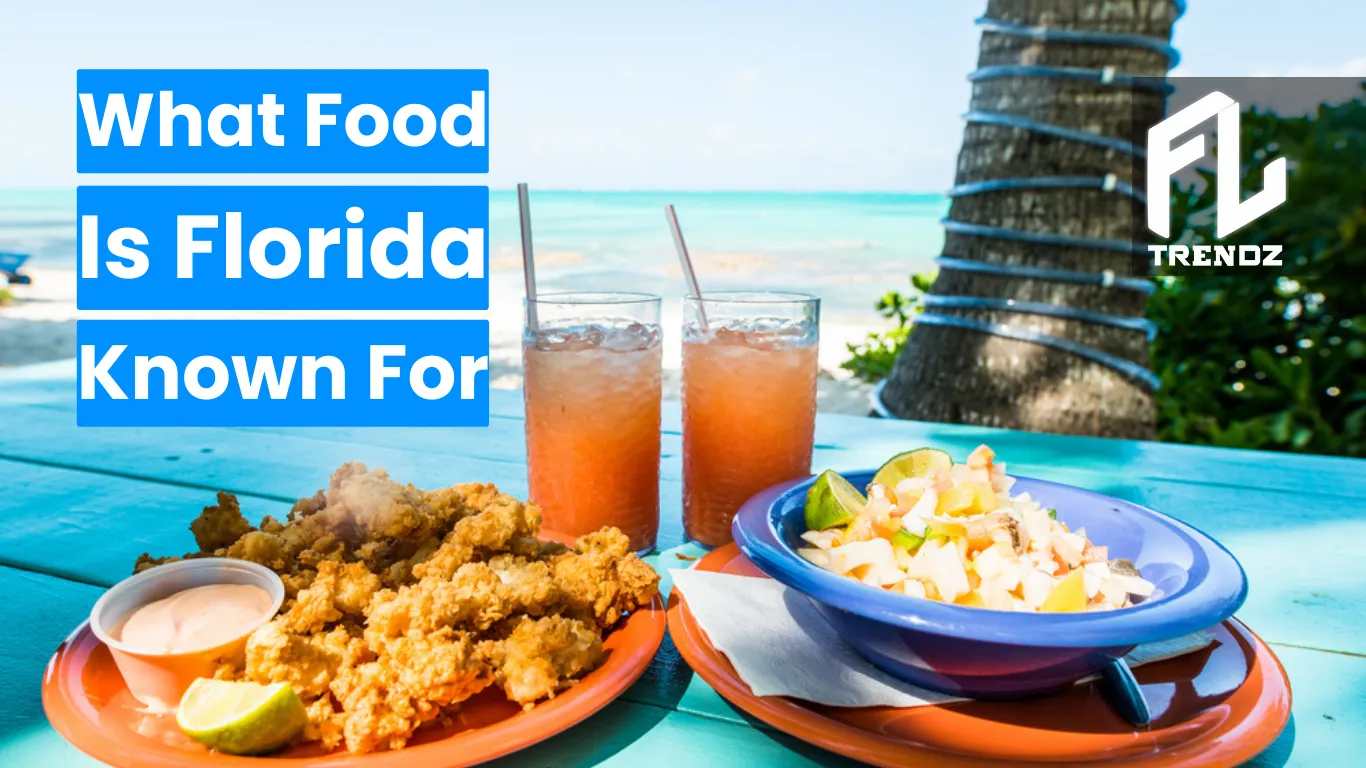





Thanks for sharing. I read many of your blog posts, cool, your blog is very good.
Your article helped me a lot, is there any more related content? Thanks!
Your article helped me a lot, is there any more related content? Thanks!
Can you be more specific about the content of your article? After reading it, I still have some doubts. Hope you can help me.
I don’t think the title of your article matches the content lol. Just kidding, mainly because I had some doubts after reading the article.
I cherish the way your words reflects your unique personality. It’s like engaging in a meaningful conversation.
I love how you analyze complex ideas into simple and understandable parts.
Thank you for your sharing. I am worried that I lack creative ideas. It is your article that makes me full of hope. Thank you. But, I have a question, can you help me?
Can you be more specific about the content of your article? After reading it, I still have some doubts. Hope you can help me.
Thank you for your sharing. I am worried that I lack creative ideas. It is your article that makes me full of hope. Thank you. But, I have a question, can you help me? https://accounts.binance.com/ro/register-person?ref=V3MG69RO
This is an invaluable resource for anyone interested in this subject.
Your knowledge stands out in this post; I’m impressed.
rov8pz
ta2wdt